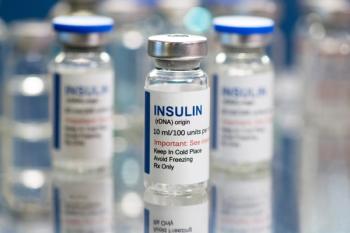
Study Confirms “Pandemic Fatigue” Occurred Due to Social Restrictions, Compliance to Preventative Measures
Key Takeaways
- Pandemic fatigue led to decreased adherence to COVID-19 measures, with psychological factors like fear and information access influencing compliance.
- Women and younger individuals showed higher compliance in later waves, while higher education and economic status correlated with greater support for restrictions.
A study reveals declining support for COVID-19 measures over time, highlighting the critical role of pharmacists in providing essential health education.
A comprehensive longitudinal study tracking adherence to COVID-19 measures across 3 major waves (March 2020 to April 2021) has confirmed a significant trend of "pandemic fatigue," noting that support for social restrictions and compliance with preventive measures statistically significantly decreased over the course of the pandemic. This deterioration highlights a persistent challenge in public health, emphasizing the urgent need for reliable, evidence-based education, which is a role where pharmacists are uniquely positioned to serve.1
“Our research results show that the respondents were less likely to use the preventive measures and less supportive of the introduced restrictions with each successive wave,” the study authors said.1 “It is worth emphasizing that the correlation between the assessment of the possibility of receiving information about COVID-19 and the support of social restrictions and recommendations increased during the pandemic.”
The Influence of Fear, Information, and Predictors of Compliance
While compliance generally waned, the importance of psychological factors influencing adherence grew stronger over time, according to the authors of the study in Poland. Specifically, a greater perceived fear of infection was strongly associated with more frequent support for restrictions and increased compliance with preventive measures, with this association intensified across successive waves. Similarly, the perceived possibility of obtaining information about SARS-CoV-2 and preventive measures was positively correlated with both support for restrictions and adherence, and the strength of this correlation increased throughout the pandemic. This suggests adequate information can effectively mobilize the public in the fight against an epidemic.1
Compliance with measures often varied based on demographic and socioeconomic traits, though patterns sometimes shifted dramatically over time. Women consistently reported higher compliance with preventive measures than men across all 3 waves studied. Furthermore, women's support for restrictions was significantly higher than men's, reaching statistical significance during the third wave.1
As for age-related compliance, age was initially positively associated with compliance, meaning older individuals complied more in the first 2 waves, but the correlation became negative during the third wave, indicating that younger participants demonstrated greater support for restrictions and higher adherence.1
Additionally, individuals with higher education and higher perceived economic status expressed greater support for restrictions across successive waves. A positive relationship between both higher education and economic status and compliance with preventive measures was clearly observed in the third wave. Conversely, individuals with greater professional experience expressed lower support for restrictions across all waves and lower compliance in the third wave.1
Furthermore, investigators found that compliance with recommendations was not consistently associated with poorer self-rated health or belonging to a high-risk group. In the first and third waves, individuals classified as high-risk for severe COVID-19 were less likely to support restrictions and reported lower compliance with preventive measures. This pattern of low adherence was also observed among respondents living with a high-risk individual during the third wave. Researchers suggest this might be an outcome of pandemic fatigue being particularly pronounced among those who were constantly reminded of their vulnerability.1
The Pharmacist's Expanded Role in Care and Education
The increasing demand for reliable health guidance and support services necessitated a profound evolution in pharmaceutical care, as evidenced by pharmacists’ experiences in the United Arab Emirates. Pharmacists reported a marked increase in their engagement in patient education (88.8%) and medication review (76.6%) after the pandemic began. The primary counseling areas that pharmacists were engaged in included advice on preventive measures (97.9%), self-isolation and quarantine protocols (93.7%), and guidance on dietary supplements (79.9%).2
To maintain patient access and mitigate infection risks, remote services rapidly advanced. A significant proportion of pharmacists embraced teleconsultation (77.1%) and remote filling of prescriptions (54.2%). This period also altered dispensing patterns, with reported increases in both OTC medicines (73.4%) and antibiotics (49.1%). Pharmacists’ interventions on prescriptions also saw a rise, accompanied by a reported increase in physicians' acceptance of these interventions, especially concerning dosage regimens for COVID-19 patients.2
Further, a study in Jordan found that the public positively endorsed the educational impact of the pharmacist, medication delivery services, and the idea of extending pharmacists’ prescribing authority. More than half of the participants (61.1%) believed that pharmacists should be able to prescribe OTC medications, though only 15.7% believed they should be able to prescribe all types of medications.3
Medication delivery was temporarily allowed during the pandemic to ensure timely access to drugs and was overwhelmingly perceived positively. Approximately 81.1% of participants agreed it helped them take their medications on time, and 82.0% reported improved satisfaction with the pharmacy.3
However, public concern existed, with 38.8% believing delivery might contribute to the spread of COVID-19 infection and 37.4% fearing it could spread counterfeit medications. Findings from studies around the world indicate that policy decision-makers should update regulations to formalize and allow the extension of pharmacy services and prescribing roles developed during the emergency.3
“The obtained research results indicate that social restrictions and preventive measures are less often supported and applied, while the importance of information on COVID-19 is increasing,” the study authors concluded.1 “It is therefore important to provide reliable, evidence-based education to shape attitudes that contribute to reducing the impact of the pandemic.”
READ MORE:
Are you ready to elevate your pharmacy practice? Sign up today for our
REFERENCES
1. Kożybska M, Prajzner A, Olha F, Jurczak J, Szpakow A. Alarming data on attitudes and practices toward COVID-19 - changes during the 1 st, 2nd and 3rd waves of the pandemic: a cross-sectional study. Sci Rep. 2025;15(1):40144. Published 2025 Nov 17. doi:10.1038/s41598-025-23808-z
2. Kharaba Z, Moutraji SA, Khawaldeh RAA, Alfoteih Y, Meslamani AZA. What has changed in the pharmaceutical care after COVID-19: Pharmacists' perspective. Pharm Pract (Granada). 2022;20(2):2656. doi:10.18549/PharmPract.2022.2.2656
3. Alhamad H, Abu-Farha R, Albahar F, Jaber D. Public perceptions about pharmacists' role in prescribing, providing education and delivering medications during COVID-19 pandemic era. Int J Clin Pract. 2021;75(4):e13890. doi:10.1111/ijcp.13890
Newsletter
Pharmacy practice is always changing. Stay ahead of the curve with the Drug Topics newsletter and get the latest drug information, industry trends, and patient care tips.













































































































































